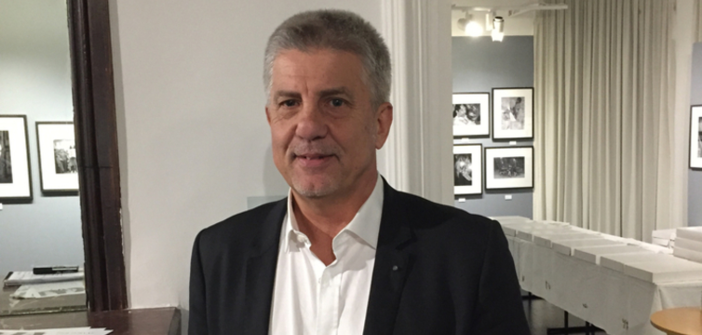
Philippe Manassero, President of the Departmental Olympic and Sports Committee of the Alpes-Maritimes (CDOS 06), shared his thoughts on the recent Olympics in South Korea. Besides sometimes capricious weather conditions (polar cold, snowstorms, or gusts of wind), several points particularly caught our attention: the political context, doping, and the performances of French and Azur athletes.
It’s now been over a week since the Olympic flame was officially extinguished in Pyeongchang. It’s time to take stock!
The Games of Peace
And yet, it wasn’t a guaranteed success. Indeed, since the end of the Korean War (1950-1953), tensions have persisted on the peninsula. Currently, no peace treaty has ever been signed between the two States, so they remain in conflict. For over two years, dialogue was even entirely broken. This is compounded by North Korea’s capital, Pyongyang, conducting repetitive ballistic missile tests—a recurring threat to the United States under Donald Trump.
However, Olympism once again in the history of the modern Games surpassed diplomacy. As a result, strong political images marked the Pyeongchang Olympics. It began with the opening ceremony where both Koreas marched together under one unified flag. At the same time, Moon Jae-in, President of the southern region, and Kim Yo-jong, sister of Kim Jong-un, leader of the northern part, exchanged a handshake. Not to forget Su Hyon Jong and Park Jong-ah, both members of the unified Korean ice hockey team, who served as the second-to-last torchbearers of the Olympic torch.
“What a joy to see that sport can be a unifier of peace,” rejoices Philippe Manassero. “Bringing these two countries together under a single banner, and notably in ice hockey, allows us to share a beautiful image of sport, which I hope will be beneficial for the future.”
New Doping Cases Uncovered
Following state-organized doping during the Sochi Games in 2014, Russia was suspended from the event by the International Olympic Committee (IOC). Only a few Russian athletes were allowed to compete under the Olympic banner, under certain conditions. Yet, two new positive cases were revealed among the “Olympic Athletes from Russia”: Nadezhda Sergeeva in bobsleigh and Aleksandr Krushelnitskiy in curling.
“Doping has always been problematic, particularly in countries of the communist bloc during the Cold War. However, for decades, a great deal of work has been done to combat it, and this time, the IOC has been stringent,” acknowledges the President of the Departmental Olympic and Sports Committee of the Alpes-Maritimes. “We must continue to develop tests and make them increasingly efficient. Also, we must address the root of the problem and establish a long-term program of initiation among youth, to hammer home these complications related to banned substances.”
What’s the Verdict for French Athletes? And Especially, What’s the Future for Team France?
The Ministry of Sports, led by Laura Flessel, a double Olympic fencing champion, and the French National Olympic and Sports Committee (CNOSF) aimed for 20 medals. Just like in Sochi in 2014, French athletes, ranking 9th overall, collected 15 medals (5 gold, 4 silver, and 6 bronze). “The outcome is not negative, but it could have been better. It can always be better,” insists Philippe Manassero. “Where we can be disappointed is in the alpine skiing events.”
The French biathlon team made up for it as a third of the French medals (3 gold and 2 bronze) were obtained in these events. “Alongside the Nordic countries, biathlon remains a rather French specialty. We therefore had a strong percentage of victories,” he notes. And how not to mention the biathlete Martin Fourcade, the flagbearer of our delegation? With his three gold medals adding to his record, he has become the most decorated French Olympian in history, for both summer and winter Games, with five Olympic titles.
“And then there are these so-called modern sports, like snowboard cross, where our young athletes have shown a lot of potential,” analyzes the President of the CDOS 06. “These often complicated competitions allow them to gain experience for the future.”
Spotlight on Local Athletes
Four Azur athletes were selected for this fortnight: Julia Pereira and Ken Vuagnoux in snowboard cross, as well as Nastasia Noens and Mathieu Faivre in alpine skiing. “The great story is that of Julia Pereira, crowned Olympic vice-champion,” praises Philippe Manassero. “This 16-year-old girl, carefree and yet already so mature, is surely a budding champion who will become a true leader in her discipline for future events.”
Solène FALAISE